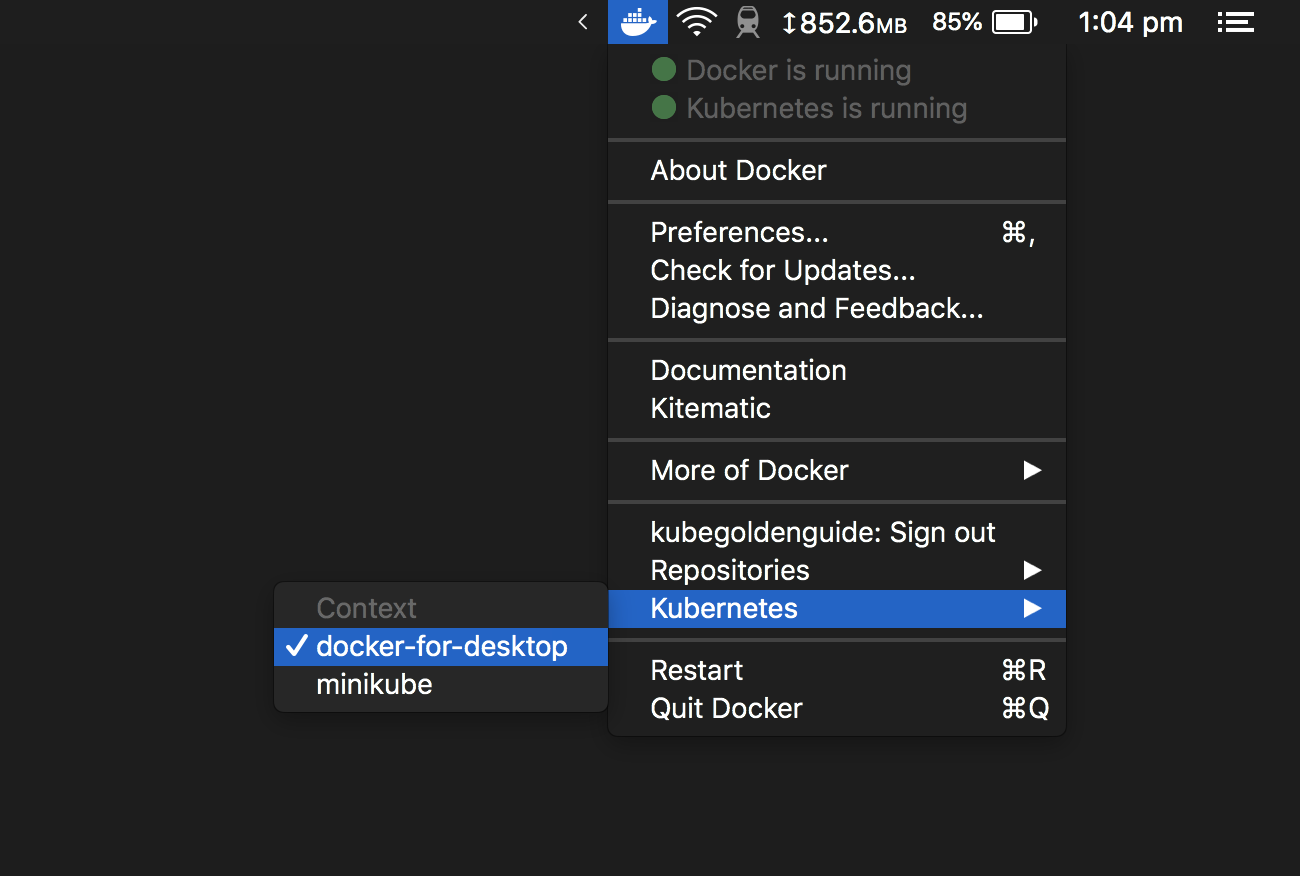


The Datadog Agent can automatically track which services are running where, thanks to its Autodiscovery feature. Within minutes, you should see metrics with the prefix kubernetes_state. Kubectl create -f kube-state-metrics.yaml

#Docker for mac kubernetes you must be logged in to the server install
And, if you’re running a large-scale production deployment, you can also install the Datadog Cluster Agent-in addition to the node-based Agent-as a centralized and streamlined way to collect cluster-data for deep visibility into your infrastructure. Our documentation details several other ways you can deploy the Datadog Agent, including using the Helm package manager and Datadog Operator. Now you can glance at your built-in Datadog dashboards for Kubernetes and Docker to see what those metrics look like. Last Successful Execution Date : 15:20:30.000000 UTC Metric Samples: Last Run: 290, Total: 15,537 Last Successful Execution Date : 15:20:37.000000 UTCĬonfiguration Source: file:/etc/datadog-agent/conf.d/docker.d/ Metric Samples: Last Run: 378, Total: 14,191 Instance ID: kubelet:d884b5186b651429 Ĭonfiguration Source: file:/etc/datadog-agent/conf.d/kubelet.d/ Then run the following command to deploy the Agent as a DaemonSet: Replace with an API key from your Datadog account. Or, if you only want to install it on a specific subset of nodes, you can add a nodeSelector field to your pod configuration.ĪpiVersion : apps/v1 kind : DaemonSet metadata : name : datadog-agent namespace : default spec : selector : matchLabels : app : datadog-agent template : metadata : labels : app : datadog-agent name : datadog-agent spec : serviceAccountName : datadog containers : - image : datadog/agent:latest imagePullPolicy : Always name : datadog-agent ports : - containerPort : 8125 name : dogstatsdport protocol : UDP - containerPort : 8126 name : traceport protocol : TCP env : - name : DD_API_KEY value : - name : DD_COLLECT_KUBERNETES_EVENTS value : "true" - name : DD_LEADER_ELECTION value : "true" - name : KUBERNETES value : "true" - name : DD_HEALTH_PORT value : "5555" - name : DD_KUBELET_TLS_VERIFY value : "false" - name : DD_KUBERNETES_KUBELET_HOST valueFrom : fieldRef : fieldPath : status.hostIP - name : DD_APM_ENABLED value : "true" resources : requests : memory : "256Mi" cpu : "200m" limits : memory : "256Mi" cpu : "200m" volumeMounts : - name : dockersocket mountPath : /var/run/docker.sock - name : procdir mountPath : /host/proc readOnly : true - name : cgroups mountPath : /host/sys/fs/cgroup readOnly : true livenessProbe : httpGet : path : /health port : 5555 initialDelaySeconds : 15 periodSeconds : 15 timeoutSeconds : 5 successThreshold : 1 failureThreshold : 3 volumes : - hostPath : path : /var/run/docker.sock name : dockersocket - hostPath : path : /proc name : procdir - hostPath : path : /sys/fs/cgroup name : cgroups In this section, we will show you one way to install the containerized Datadog Agent as a DaemonSet on every node in your Kubernetes cluster.


 0 kommentar(er)
0 kommentar(er)
